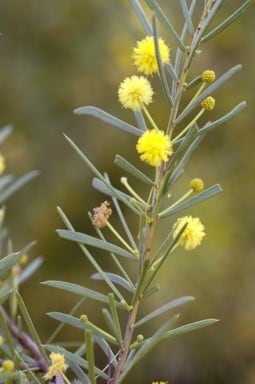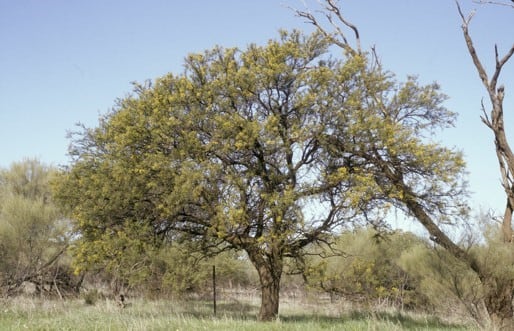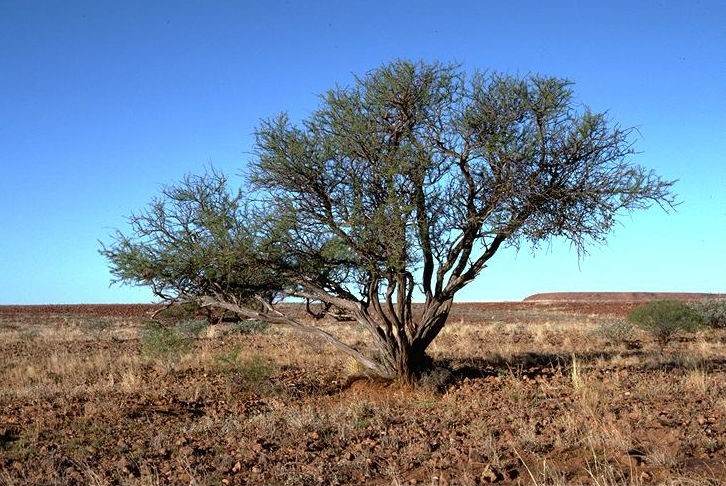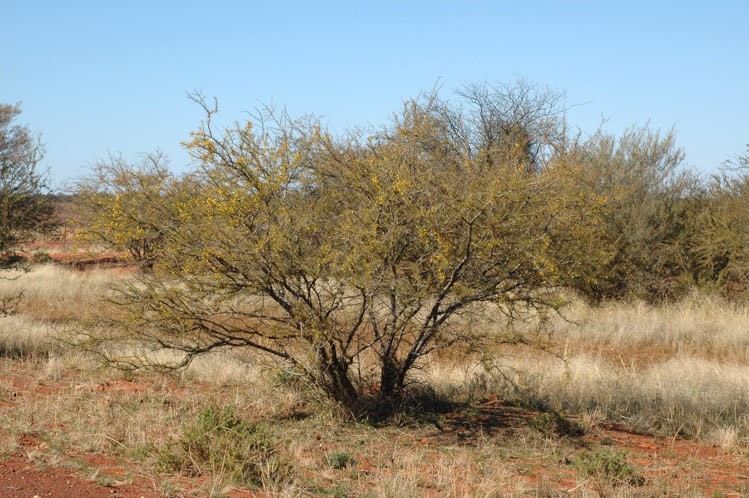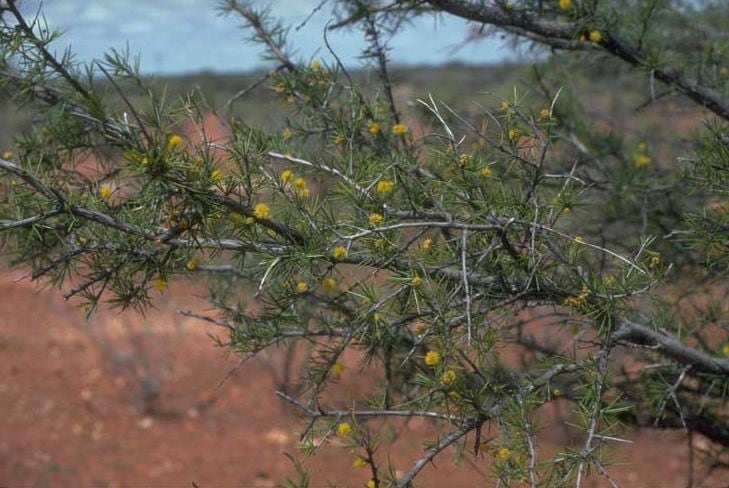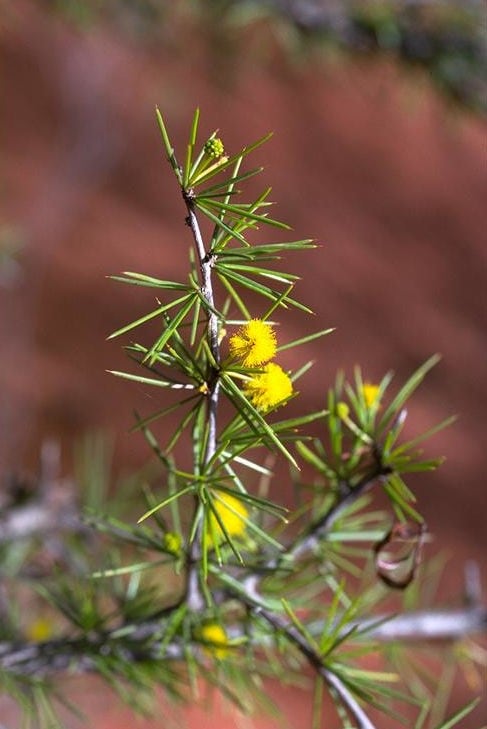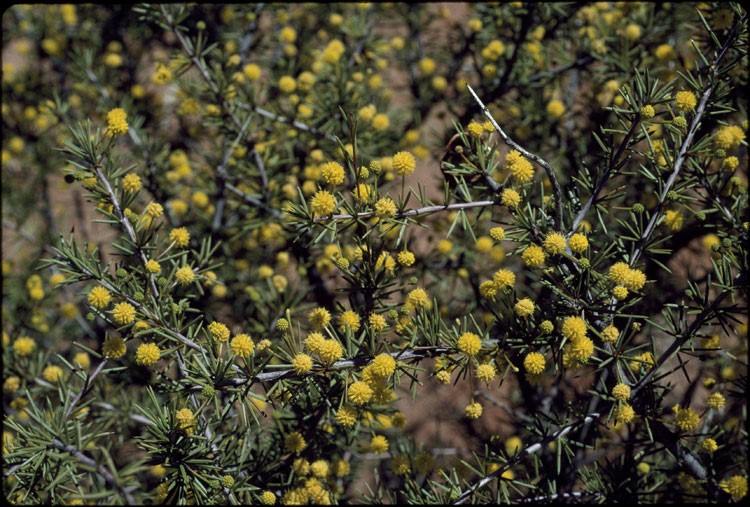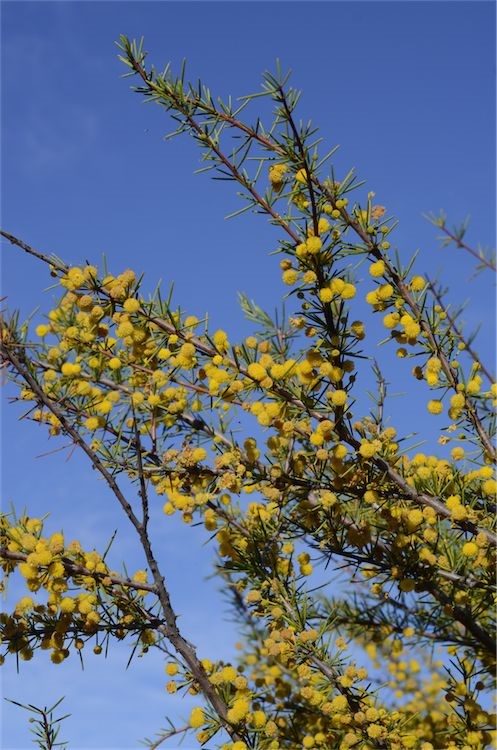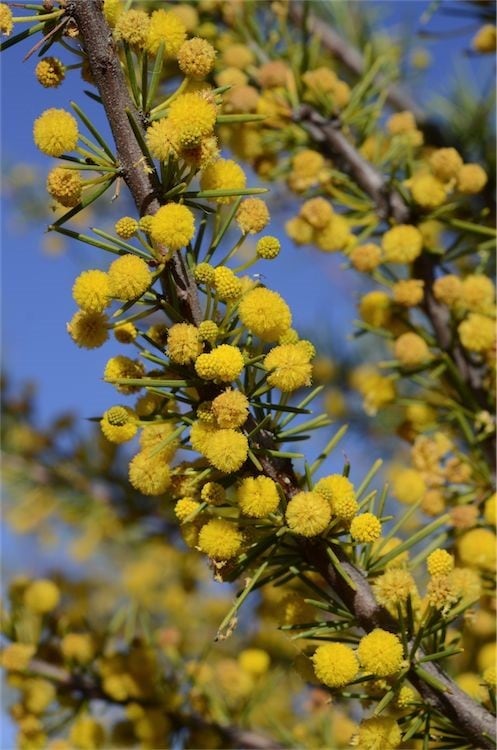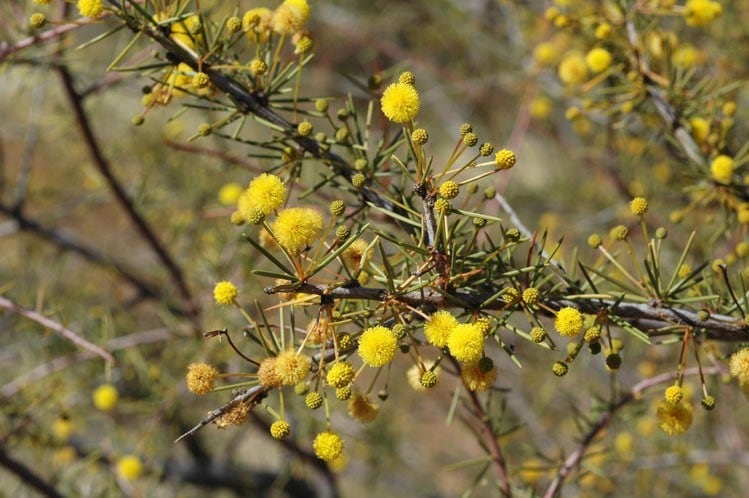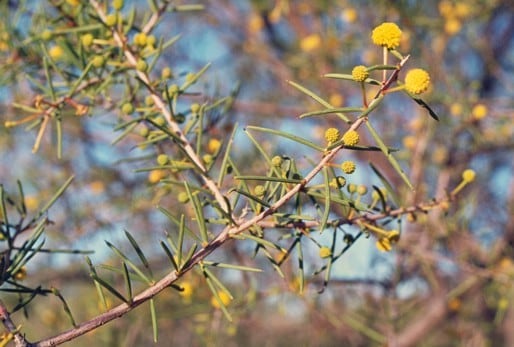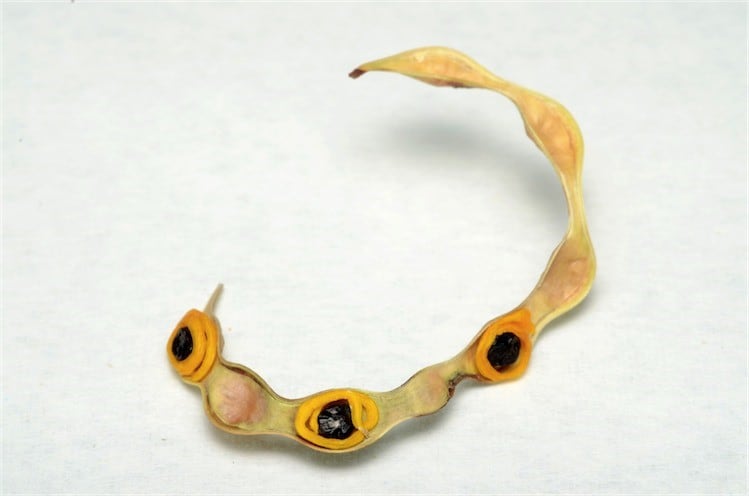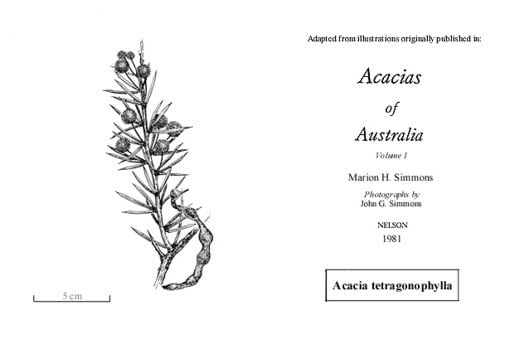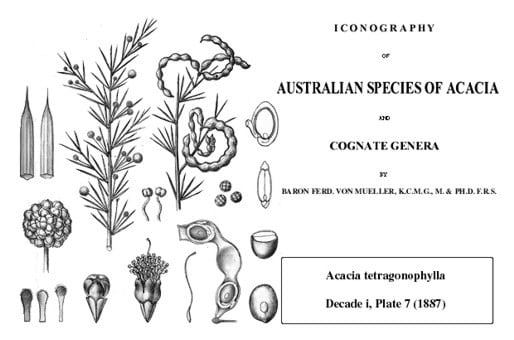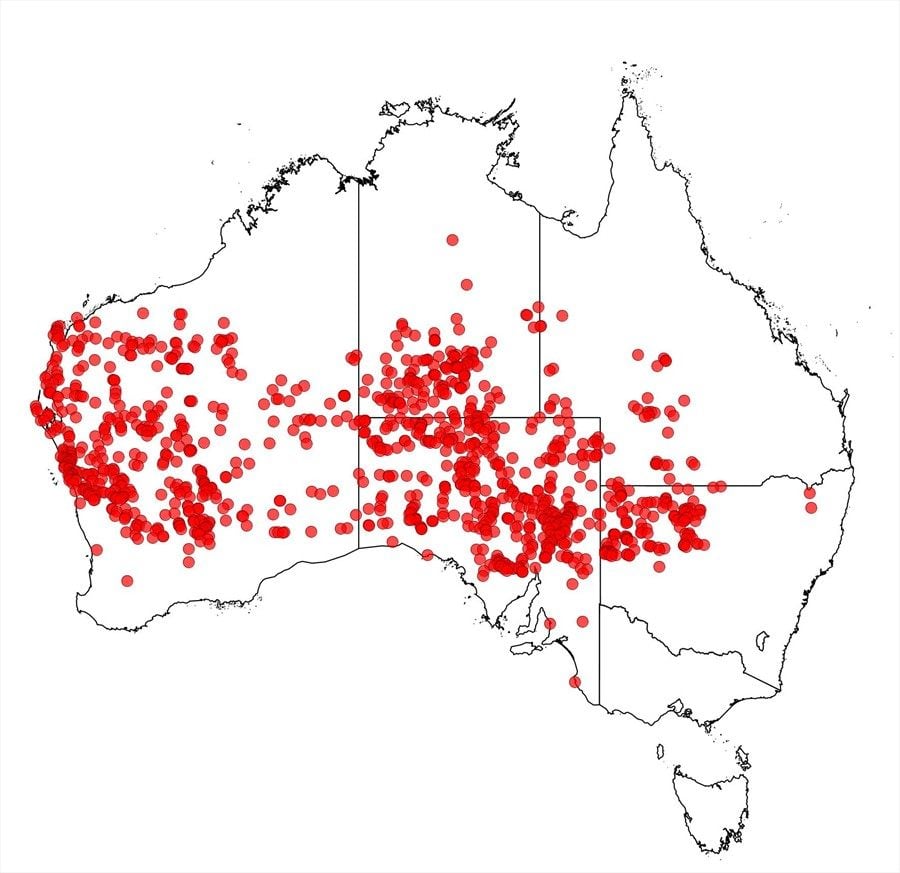Acacia tetragonophylla F.Muell.
WATTLE
Acacias of Australia
Common Name
Kurara, Curara, Dead Finish
Family
Fabaceae
Distribution
Widespread in arid and semi-arid areas from Onslow and Dongara, W.A., throughout southern N.T. and most of S.A., E to near Charleville, Qld, and near Brewarrina, N.S.W.
Description
Intricate often straggly shrub or tree normally 2–5 m high. Branchlets usually glabrous. Phyllodes fasciculate in groups of normally 2–6 on nodose dwarf lateral branchlets, single on new shoots, linear-subulate, usually terete to pentagonal or compressed in section, 1–5 (–7) cm long, (0.3–) 0.5–1.3 (–3) mm wide, pungent, with slender 1–2 mm long cusp, rigid, glabrous, rather prominently 5 (–7)-nerved, usually sulcate between nerves when dry. Inflorescences simple, 1–5 per axil; peduncles 1–3 (–4) cm long, glabrous; heads globular, densely 50–90-flowered, golden. Flowers 5-merous; sepals free, linear-spathulate. Pods raised over seeds and slightly to markedly constricted between them, curved to openly 11/2-coiled, often twisted following dehiscence, normally to 10 cm long and 4–6 (–9) mm wide, subwoody to coriaceous or thinly crustaceous, glabrous. Seeds longitudinal, elliptic, 4–5.5 mm long; funicle encircling seed, orange-red or bright yellow.
Habitat
Grows in a variety of habitats, but often near watercourses or in mulga communities.
Specimens
W.A.: 26 km S of Cue towards Mt Magnet, B.R.Maslin 4561 (BRI, PERTH). N.T.: 13 km W of Santa Teresa Mission, M.Lazarides 5733 (K, NSW, PERTH). S.A.: c. 10 km W of Quinyambie HS, Lake Frome, D.Whibley 3546 (PERTH). Qld: 6.2 km from Thargomindah on main road to Tibooburra, N.Hall H78/45 (NSW, PERTH). N.S.W.: near Brooksville, c. 32 km due NW of Weilmoringle, D.J.McGillivray 2967 (K, NSW).
Notes
The phyllodes occur singly on actively growing new shoots but with age additional phyllodes develop to form a fascicle which is ultimately borne on nodose, dwarf lateral branchlets. This phyllode arrangement is uncommon in subg. Phyllodineae but, according to J.H.Ross, Mem. Bot. Surv. S. Africa 44: 12 (1979), is common in subg. Acacia (infrequent in subg. Aculeiferum). Specimens with single phyllodes resemble A. quadrisulcata and the acicular phyllode variant of A. maitlandii.
Specimens with unusually broad, flat phyllodes occur near North West Cape, W.A. These phyllodes reach 3 mm wide, are 1- (rarely 2-) nerved on each face and have a thickened, 2-nerved adaxial margin (e.g. c. 5 km due N of Learmonth airport, B.R.Maslin 4763, BRI, PERTH). A variant from near Adavale, Qld, is recorded by M.Simmons, Acacias Australia 48 (1981). It is reported to be a tree to 6 m high with pendulous branches and phyllodes which are less sharp and less brittle than normal.
Phyllodes and the bark of the root are used traditionally by N.T. aborigines for superficial skin lesions, for bandaging of fractures of the limbs and to remove warts, while in W.A. the bark is used for coughs, fide, Aboriginal Communities of the Northern Territory, Traditional Aboriginal Medicines N. Territory Austral. 42–45 (1993) (Conservation Commission of the Northern Territory of Australia, Darwin).
Affinities unknown but sometimes possibly confused with A. walkeri.
Acacia tetragonophylla is a hardy, drought- and frost-resistant species that regenerates from a basal root stock following fire; it is thought to have a life span of between 50 and 100 years. See K.A.O’Connell & J.E.D.Fox, Mulga Research Centre Journal 12: 57–64 (1995), for summary of biological and ecological characteristics. This species is of poor to moderate nutritive value but regarded as a drought standby fodder in W.A. and central Australia. Further details on foliage value and range condition indicator value are provided by A.A.Mitchell & D.G.Wilcox, Arid Shrubland Pl. W. Australia 288 (1988).
FOA Reference
Data derived from Flora of Australia Volumes 11A (2001), 11B (2001) and 12 (1998), products of ABRS, ©Commonwealth of Australia
Author
Minor edits by B.R.Maslin, J.Reid & J.Rogers
B.R.Maslin
This identification key and fact sheets are available as a mobile application:
URL: https://apps.lucidcentral.org/wattle/
© Copyright 2018. All rights reserved.
